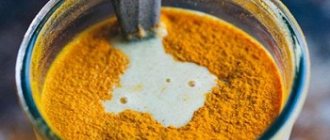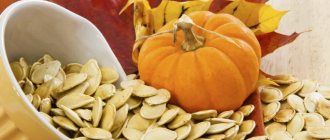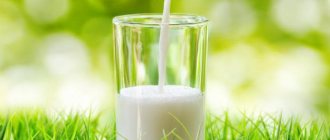Camembert is a soft, creamy French cheese made from cow's milk. It was first made at the end of the 18th century, in Normandy. Camembert has a color ranging from white to light cream. The taste is sharp, piquant, a little like mushroom. The outside of Camembert is covered with a fluffy white crust formed by a special cheese mold of the Penicillium camemberti species. Camembert is similar in taste and consistency to its brother Brie, but its fat content is slightly higher.
Here is an overview of the composition and calorie content of some types of Camembert cheese:
Cheese Bonjour de France Camembert 50%
Manufacturer: Bongrain, France. Soft cheese with a penicillin crust like Camembert. The cheese is packed in a metal jar. Adherents of classic taste give their preference to French Camembert cheese. In 1981, Parisian-born François Durap began producing soft cheese with white mold near the village of Camembert in Normandy. It takes at least two and a half liters of fresh milk to prepare one cheese weighing 250 g. The cheese matures for at least 21 days. The finished cheese has a creamy yellow color, a salty taste and is covered with a natural rind with white mold. Its fat content is 45%. Ingredients: pasteurized cow's milk, pasteurized cream, lactic acid enzymes of bacterial origin, fine salt, animal rennet, molds. Nutritional value per 100g: proteins - 18g, fats - 25g. Calorie content 300 kcal.
Dietary properties:
What calorie content does Camembert cheese have, what dietary properties does it have? All this is of interest to those who lead a healthy lifestyle and monitor their health and figure. So we will try to answer these questions in the next article.
So here it is:
Camembert is a variety of French soft blue cheese made from pasteurized whole cow's milk.
To obtain one head weighing 250 g, about 2.5 liters of milk are required. The ripening period for Camembert is 21 days.
Cheese dough can range in color from white to brick orange. Its taste is sharp, with mushroom notes. Camembert heads are covered with fluffy white mold.
According to legend, this cheese was first made in Normandy by the peasant woman Marie Harel. She also received the recipe from the priest Charles Jean Bonnevoust, whom a kind peasant woman saved from persecution during the French Revolution. Since then, cheese began to gain popularity. In 1863, Marie Harel's grandson, Victor Penel, sold Camembert to Emperor Napoleon III. The sovereign liked the cheese so much that he ordered it to be regularly supplied to the royal table. So Camembert became a symbol of the nation.
However, the recipe for modern Camembert was finally improved only at the end of the 19th century. At the same time, M. Riedel made a wooden box for transporting delicate cheese. Similar packaging is still used today.
The production technology of this cheese involves adding a small amount of skim milk. Camembert is usually produced between September and May.
When making cheese, rennet is added to milk. It collapses after 2 hours. During this time, the milk is periodically stirred to prevent the cream from settling.
The cheese mass is laid out in metal molds and left overnight. In the morning, when the mass of the curd has decreased by about 2 times, add fresh cheese mass to the molds. After a day, the cheese heads are already hard enough to be turned over.
Before the heads are sent to storage for ripening, they are salted. By this time, they are already covered with a coating of white mold. At first, the cheese ripens in a room with a temperature of 13 °C, where mold growth continues. It is then moved to storage at a temperature of 10 °C and high humidity. Here the vital activity of mold fungi slows down, and the plaque on the heads becomes red-brown in color.
The cheese dough of a ripened head should be hard and viscous. Young Camembert has a musty aroma. As it matures, the smell becomes stronger. Overripe cheese smells like ammonia.
Cheese Bongrain Gerard Selection Camembert 50%
Manufacturer: Bongrain Group Enterprise: Societe B.J., France. Mass fraction of fat in dry matter 50%. Ingredients: pasteurized milk, pasteurized cream, table salt, enzymes for crust formation using bacterial fermentation of lactic acid microorganisms and a milk-clotting enzyme preparation of animal origin. Nutritional value per 100g of product: fat - 34g, protein - 16.4g, carbohydrates - 1g. Calorie content - 375 kcal. Cheese Montmartre Camembert 45% soft Manufacturer: Fromagerie de l'Ermitage, France. Mass fraction of fat in dry matter 45%. Product composition: pasteurized cow's milk using a starter of lactic acid bacteria, milk-clearing rennet of microbial origin, table salt. Nutritional value per 100g of product: proteins - 20g, fats - 21g, carbohydrates - 1g. Calorie content - 273 kcal.
Composition of nutrients, BJU
Camembert cheese
| For quantity: 100 grams | ||
| Calories — 300 | Calories from fat - 218 | |
| BJU | ||
| Total fat content | 24.26g | |
| Saturated | 15.26g | |
| Polyunsaturated | 0.72g | |
| Monounsaturated | 7.02 | |
| Cholesterol | 72mg | |
| Total carbohydrate content | 0.46g | |
| Dietary fiber | 0g | |
| Sugar | 0.46g | |
| Squirrels | 19.8g | |
| Vitamins and microelements | ||
| A - 241 µg | C - 0mg | |
| B-6 – 0.23 mg | B-12 – 1.3µg | |
| D - 0.4 µg | E - 0.21 mg | |
| Calcium 388mkg | Iron 0.33mg | |
| Magnesium 20mg | Zinc 2.38mg | |
| Potassium 187 mg | Sodium 842 mg | |
Distribution of calories for BJU:Carbohydrates (2%) Fats (72%) Proteins (26%) | ||
Processed Camembert cheese. Camembert tastes like processed cheese
Good day everyone! My name is Olga and I am from Moscow. I decided to make Comumbert cheese. Here's the recipe: for 4 liters. milk: 1. Pasteurize the milk (if it is not pasteurized) 2. Heat the milk to 30' 3. Add mesophilic starter 1/8 tsp. 4. Next Geotrichum candidum 1/64 tsp. 5. Then Penisillium candidum 1/64 tsp. We wait 2-3 minutes. Mix. 6. Dilute 1/8 tsp in 50 ml. calcium chloride 7. Dilute ¼ tsp in 50 ml. liquid rennet Add to milk. Mix. Leave for 1.5 hours. Cut the clot. Transfer to forms. Let it drain. Then I turn it over every hour for 5-6 hours. I leave it in the form overnight. I add salt in the morning. I leave it for about 5 more hours. Then I put it in a container and in the refrigerator. Temperature ~ 8-10'. I change napkins every day and wipe containers to remove moisture. Mold forms within 6-8 days. Mold grows well over the entire surface of the cheese. After three weeks, I wrap it in camembert paper (in one layer of paper, although I read that you need two). The cheese matures for another 1-1.5 weeks. So the cheese is ready. The cheese looks perfect! Inside, as it should be, the core is soft and viscous. There is no ammonia smell. But, here's the problem! THE CHEESE HAS NO TASTE...THAT SAME SPICY!!! IT TASTES LIKE PROCESSED CHEESE(((Please tell me where is the mistake? What is the problem?
Buyers' opinion
Buyers leave a lot of positive reviews about Camembert cheese. People note the pleasant, unusual taste of this product. This cheese is very easy to cut. However, it is not so easy to spread, so many lovers put it on bread in pieces.
Some buyers report that the cheese tasted like raw minced meat to them. However, such flavor tones are not at all characteristic of Camembert. It is possible that in this case we were talking about a low-quality product. Most people notice a mushroom, creamy or nutty flavor.
Negative reviews about Camembert cheese are associated with its pronounced smell. Not all gourmets like fragrant cheese products. However, it is the unusual aroma that makes this delicacy so special. White mold gives this smell to the cheese.
You can find reports that Camembert smells like ammonia. This is a clear sign of spoiled cheese. Under no circumstances should such a product be eaten. Fresh camembert may smell musty, but its aroma should not have any ammonia tones.
Scope of application and calorie content
The scope of application of Camembert cheese is extensive, from its use as a flavoring snack for red and white grape wines, to an ingredient in various complex dishes, including desserts, baked goods and roasted meats. The French prepare numerous delicious sauces, cheese soups, gravies, pastries and cakes based on it.
It will be useful for those who are watching their figure to know that the calorie content of Camembert cheese is quite high, amounting to more than 320 kcal for every 100 grams. finished product. But at the same time, this type of cheese has an excellent balanced range of nutrients, vitamins, saturated fatty acids, microelements and enzymatic substances. It contains large quantities of calcium and vitamin D. These two components help strengthen bones, hair and nail plates.
Features of eating Camembert cheese
The most important property of Camembert cheese is the complete absence of lactose in its composition. Therefore, the product can be eaten by people who suffer from intolerance to this substance. But in childhood it is not recommended to use it as food, since the raw materials do not go through the pasteurization stage, and cases of listeriosis may occur. The infection is especially dangerous for children under 5 years of age and pregnant women.
In all other cases, this excellent product allows you to enhance the development of skeletal bones and muscles, and provide brain tissue with a sufficient amount of unsaturated fatty acids and vitamins.
- Author: Alla
Rate this article:
- 5
- 4
- 3
- 2
- 1
(0 votes, average: 0 out of 5)
Share with your friends!
How did Camembert cheese come into being?
This cheese, like many of its brothers, comes from France. Outwardly it resembles another blue cheese - brie, but differs in composition, taste and consistency. Initially, it was prepared in the image and likeness of the ancient brie cheese, but due to differences in the recipe, the nutrition of the cows that provided milk for it, and violation of storage conditions, a completely different cheese was obtained.
Camembert is distinguished from Brie by its high fat content, pronounced creamy taste with hints of mushrooms, eggs or nuts. It is more delicate and soft, and quickly begins to melt at room temperature. The soft, slightly chewy center is held in place by a dense mold crust.
For almost a hundred years, the cheese did not have its own name, until in the middle of the 19th century Napoleon III tried it and fell in love with it, who gave it a name after its place of origin - the Norman village of Camembert. For a long time, this noble mold cheese could only be tasted in its homeland - France. Until, at the end of the century, the inventor Riedel came up with a special wooden box for it, allowing the product to travel long distances. Since then, Camembert has spread around the world and especially quickly won the love of Americans.
Types and degrees of maturity
Traditional Camembert (Camembert de Normandie AOC) is made exclusively from raw milk from Normandy cows. Making such cheese is a very difficult and delicate process: the product is made by hand, forming heads no larger than 12 centimeters in size. To obtain a white crust, a specially bred white mold, Penicillium Camemberti, is applied to the surface. Cheese is usually sold in an original wooden round box. Normandy also produces Camembert from pasteurized milk (Camembert Fabrique en Normandie). The most commonly seen variety on supermarket shelves around the world is simply called Camambert. It may differ in recipe and place of origin from the previous two types, but in general, it repeats the same signature texture and original taste.
There are three degrees of cheese maturity. At the initial stage (up to 10 days), when cut, an elastic middle is visible and only a little at the edges there is a liquid texture. Average maturity (10-25 days) can be determined by seeing that most of the slice is already a viscous mass, but there is still a small dense center. And finally, fully ripened cheese (25-30 days) has a dry crust on the outside and a creamy soft consistency on the inside. The longer Camembert is stored, the more pronounced its taste.
Description of Camembert cheese
Camembert Brew cheese has a dense texture with a high percentage of fat content and a light, pliable consistency. Production takes place in several stages. The main raw material is the freshest milk from cows, which receive a large amount of vegetable fats in their diet. If the raw material is insufficiently fat, cream may be added or separation may be performed to remove excess whey.
The finished product has a delicate cream color, which, depending on the quality of the raw materials and the duration of ripening, can reach an orange hue.
The smell of Camembert cheese also depends on the period during which it was intensively ripened before canning. Usually it is a rich sour smell with hints of cheese and floral aromas.
The secret is that the flavor range only intensifies during the shelf life of the cheese and is complemented by new notes. Thus, the heads are gradually covered with characteristic mold fungi, which gives the heads a typical white edge. This makes the taste a little spicy, with a hint of wild mushrooms.
Homemade camembert cheese recipe
You can prepare the delicacy yourself. This is not a very simple and not very fast process, which will require special equipment. But ardent cheese fans will be able to prepare it without much difficulty.
We will need the following devices:
- Five liter saucepan
- A special cylindrical mold with perforations for Camembert - so that the whey is freely separated from the cheese mass
- Drainage mat for preparing cheeses
- Kitchen thermometer
- Food container in which the cheese will be aged
- Measuring spoons
- Kitchen scales, if necessary they can be replaced with measuring spoons
- Drainage container











